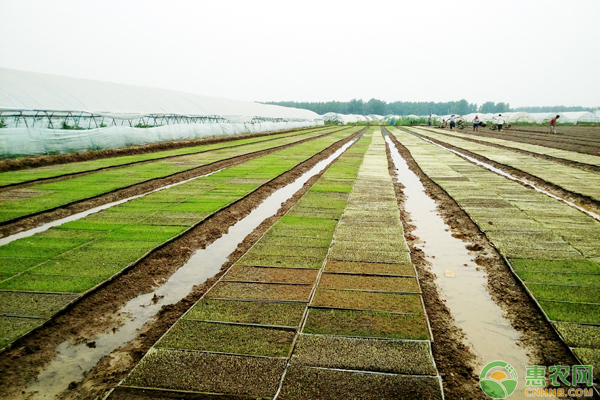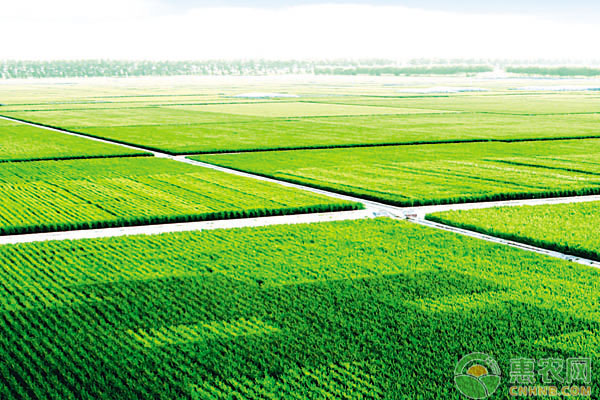What is the current development of salty and salty farmland in coastal areas? With the development of agricultural technology in China, there have been great breakthroughs in the study of salt tolerance physiology, salt damage mechanism and salt tolerance. It has promoted the selection and cultivation of salt-tolerant varieties, and there are many plants that are resistant to salt. Variety is used in production work. These will inevitably aggravate the pace of improvement and utilization of saline-alkali land.

First, improvement measures
1 Physical measures
Part of the reason for the formation of saline-alkali land in coastal areas is mainly the incorrect irrigation of cultivated land and seawater inversion by humans, which in turn makes the range of salt content not meet the normal standards. Therefore, the following measures should be taken to improve.
1.1 Improvement in the irrigation and drainage function of cultivated land
Under normal circumstances, the terrain along the beach area is not high, and the terrain on the local area is even relatively low, which can cause a large amount of water to remain in the surface layer of the earth. Repeated use of water to wash the surface layer of the earth, using a certain natural law, to evaporate salt with water loss, according to the trend of the terrain, in the low-lying areas to arrange personnel to excavate drainage devices, such as drainage ditch. It can pull out the remaining water accumulated in the area and discharge it into other areas. It is also possible to discharge the local water from the local to the outside to form an aquifer with a certain depth in the depression, ensuring sufficient time for soaking, so that the salt in the soil can be dissolved under sufficient soaking, and the salt is divided. In the range outside the depression, the salt content in the soil is reduced. Applying such improvement measures to agricultural science and technology in saline-alkali land can not only be used for farming and irrigation of saline-alkali agricultural land during drought, but also for timely flood control and drainage during floods and can reduce natural disasters. Different degrees of damage.
1.2 Guest soil pressure base
The guest soil is a kind of fine soil that does not contain saline and alkali in other areas. There are two main measures to be taken, that is, to transport part of the saline-alkali soil or cover some of the fine soil selected from the field to cover Above the saline-alkali soil, the saline-alkali soil that can be left behind can be mixed with the selected good soil. This can reduce the salinity of the soil in the region by reducing the salt content of the soil.
2 Chemical measures
2.1 Increase the amount of organic fertilizer applied, apply fertilizer properly
The improvement of fertilizers in saline soils in coastal areas is mainly divided into two types: chemical fertilizers and organic fertilizers. There are some common characteristics in saline-alkali land, such as poor soil structure and lack of nutrients. The organic fertilizer is applied to the coastal saline-alkali land, and by the microorganisms in the soil, a salt substance which exhibits alkalinity such as sodium carbonate can be neutralized. It can reduce the alkalinity of the soil and can produce a by-product, namely: humic acid by-product. The sodium humate substance interacts with the plant, and sodium humate enhances the salt-tolerant effect of the plant, and the plant can grow rapidly under the stimulating action of the substance. Humus can increase the soil buffer capacity to change the soil particles into solid particles, increase the gap between the soil particles and particles, enhance the soil's ability to penetrate water, and fully shower the salt in the soil, which can promote the structure of the pellet. Produce, increase the porosity, improve its water permeability, can help salt leaching, and can better alleviate the degree of soil return. On the one hand, the rate of decomposition of nutrients in the soil is accelerated, thereby increasing the amount of nitrogen, phosphorus and potassium contained in the soil. On the other hand, many of the organic acids it produces can neutralize the alkali in the soil, reducing the degree of salinization.

2.2 Implementation of soil amendments
In the improvement of saline-alkali soil, the modifier is directly used to participate, and the salt-alkali component contained in the saline-alkali soil is changed and balanced, and can be efficiently catalyzed to some extent. By applying a saline-alkali soil improving agent containing a nutrient in a saline-alkali region, the degree of oxygen in the saline-alkali soil can be enhanced, and the effect of the fertilizer can be fully exerted. For example, the improved acid soil reagent containing nutrients currently studied by the Guangdong Research Institute, the modified acidic soil reagent can select different kinds of natural minerals such as montmorillonite, olivine and sulfur mineral according to the situation of acid soil fertilization and crop nutrition characteristics. As raw materials, the improvement and balance of the nutrient components of acid soils and crop varieties, as well as the increase in the utilization rate of fertilizers, have been enhanced.
2.3 Straw returning measures
The straw returning technology can apply the straw which is not suitable as a feed directly or piled up to be decomposed and applied to the soil. The measures for returning straw to the field include land cover, trenching and landfilling. Because the straw contains a lot of organic matter, the content of nitrogen, phosphorus and potassium contained in it is also large. By using the technology of straw returning to improve the growth of saline-alkali crops, the saline-alkali soil can better protect the water contained in it, which plays an important role in the process of soil solidification. Straw returning can also increase the amount of crops produced, so the correct method of returning straw to the soil can increase the amount of organic matter contained in the soil, improve the physical properties of the soil, reduce the salinity of the saline-alkali land, and reduce soil erosion. Waiting for the situation.
3 Ecological measures
3.1 Planting salt-tolerant plants
Coastal land contains a higher degree of salinity, but it is massive in the distribution of saline-alkali land. Different regions have different degrees of influence on planting plants, and at the same time, the degree of nutrient elements in different soils absorbed and utilized by saline plants is also different. Two types of cultivation are generally provided when planting alkali-tolerant plants, that is, cultivation of original soil and guest soil. Among them, the areas for habitat cultivation are mainly reflected in the green belts on both sides of the city streets. Before cultivation, carefully observe the original soil of the green belt, and lay a special layer of two layers of material, and lay a moderately thick gravel on top, and lay a layer of plastic pipe underneath. The black soil and loess are then mixed and covered in the top layer of the original image. When selecting the seedling planting type, the type of space that can be selected is relatively large. Choose small and medium-sized plants with strong salt and alkali resistance as the varieties, plant them on the surface of the ground, and cover them as much as possible on the soil. Although this improvement requires more cost in later maintenance, it can greatly reduce the degree of soil salinization control.
3.2 Development of saline-alkali agriculture
Saline-alkali agriculture is a kind of agricultural production that can be developed in the past when the algae and peasant plants could not grow normally. Generalized saline-alkaline agriculture can include animal farming of salt water and seawater. The cultivation of salt-tolerant non-agricultural plants in the surface layer of saline-alkali soils and their improvement can make them salt-tolerant and alkaline, which can bring huge benefits to agriculture.

Second, summary
China has been paying close attention to the issues related to saline-alkali land in its coastal areas. Relevant experts have been working on how to improve the local saline-alkali land in China. Coastal areas can be combined with their own different characteristics to choose to use physical, chemical or biological improvement measures to improve. Based on the experience of controlling saline-alkali land accumulated over the years and the different characteristics of saline-alkali land, the improvement measures mentioned above can be flexibly adopted to achieve the improvement effect.
Teriparatide injection pen is a medication used to treat osteoporosis in men and postmenopausal women who are at high risk of bone fractures. It is a type of parathyroid hormone that stimulates bone growth and increases bone density. The injection pen is a pre-filled device that contains a single dose of teriparatide and is administered subcutaneously (under the skin) once a day. The pen is easy to use and has adjustable dosing options to ensure the correct amount of medication is administered. Teriparatide injection pen is typically prescribed for up to two years and may be used in combination with other osteoporosis medications.
Teriparatide Injection Pen,Resuable Pen Injector,Teriparatide Pen Injector,Pen Injector For Teriparatide
Shanghai Enjosim Medical Technology Co., Ltd , https://www.enjosimmedical.com